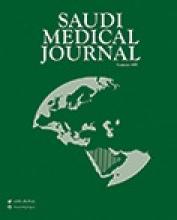Abstract
Mixed epithelial and stromal tumor of the kidney (MESTK) is a rare tumor composed of epithelium and interstitium. In radiological imaging, the masses are cystic and solid, and it is difficult to distinguish MESTK from renal cystic lesions. A final diagnosis of MESTK depends on pathology. We report this rare case of MESTK that was diagnosed in a 21-year-old woman. 18F-labeled fluoro-2-deoxy glucose (18F-FDG) positron emission tomography (PET)/computerized tomography (CT) and contrast-enhanced computerized tomography features of MESTK are presented, and could potentially provide useful information for the differential diagnoses of cystic renal neoplasms and preoperative staging of the tumor.
Mixed epithelial and stromal tumor of the kidney (MESTK) is a relatively rare renal tumor, which often occurs in perimenopausal women.1,2 It is rarely reported in literature, and even less reported in 18F-labeled fluoro-2-deoxy glucose (18F-FDG) positron emission tomography (PET)/computerized tomography (CT). The patient we reported was a 21-year-old young woman. The tumor was found on physical examination and confirmed to be MESTK by surgical resection.
The objective of the study is to report a rare case and provide possible diagnostic suggestions for clinical and imaging diagnosis.
Case Report
Patient’s information
The patient is a 21-year-old female and the tumor of the kidney was unexpectedly found with no obvious clinical symptoms during a physical examination.
Clinical findings
Renal function and tumor markers were normal, and she had no family history of kidney disease. She underwent an enhanced CT scan, and the possibility of kidney cancer was considered. She therefore subsequently underwent a preoperative 18F-FDG PET/CT examination.
Diagnostic assessment
Axial enhanced abdominal CT showed a mass of 46×56×81 mm in the lower pole of the left kidney that was composed of solid and cystic components. A heterogeneous delayed enhancement was found in this mass (Figure 1A-1C, white arrow). 18F-labeled fluoro-2-deoxy glucose PET/CT imaging showed mild FDG uptake in the mass of the left kidney and no abnormal foci in other locations in MIP (Figure 2A-2G). Delayed abdominopelvic PET/CT scan still revealed mild FDG uptake in the mass (Figure 2H-2J).
Axial enhanced abdominal CT imaging (A-C): a mass of 46×56×81 mm in the lower pole of the left kidney (arrow) that was composed of solid and cystic components. A heterogeneous delayed enhancement was found in this mass.
18F-labeled fluoro-2-deoxy glucose imaging (A-J) a mild FDG uptake (SUVmax 2.6) in the mass of the left kidney (arrow), delayed abdominopelvic PET/CT scan showed still mild FDG uptake (SUVmax 1.8) (H~J).
Therapeutic intervention
She underwent a left radical nephrectomy.
Follow-up and outcomes
Subsequent surgical pathology revealed MESTK with Ki-67 of approximately 3%. The immunohistochemical analysis was positive for estrogen receptor and progesterone receptro in tumor tissues, and it was negative for inhibin (Figure 3A-3D). The patient recovered well after surgery. Figure 4 represents the timeline from patients disease process.
The immunohistochemical showing A) hematoxylin and eosin is positive, B) negative findings for inhibin, C) positive for estrogen receptor, and D) progesterone receptor in tumor tissues (A-D, original magnification ×10).
Timeline summarizing the patient’s past medical history, current illness, physical examination, diagnostic evaluations, diagnosis. interventions, final follow-up and the final resolution of the case. 18F-FDG = 18F-labeled fluoro-2-deoxy glucose.
Discussion
Mixed epithelial and stromal tumor of the kidney is a rare renal tumor and is more common in perimenopausal women. Mixed epithelial and stromal tumor of the kidney has no pathognomonic imaging features,1 and preoperative diagnosis is very difficult.3 This patient was a young female with no obvious clinical symptoms and no family history. Computerized tomography enhancement showed some characteristics, but the preoperative diagnosis was not clear. 18F-labeled fluoro-2-deoxy glucose PET/CT whole-body scanning, provides preoperative staging information and allows patients to choose reasonable treatment options. Our report was consistent with that of Kalra et al,5 suggesting that the clinical manifestations of this tumor was non-specific, and it was a rare cystic and solid tumor. Preoperative diagnosis of MESTK is difficult, and the final diagnosis depends on pathological diagnosis. However, only one case of MESTK reported on 18F-FDG PET/CT was identified in a search of PubMed2 and it was also reported that the metabolism of this tumor was not very high, they reported the SUVmax was 2.8. Our study is consistent with the results of some studies.6,7
In conclusion, CT enhancement can provide some information for the diagnosis of renal cystic masses and 18F-FDG PET/CT whole-body imaging has certain value in the selection of treatment options.
Acknowledgment
We would like to thank Chong Yin, radiologist, for reviewing the scan images and to Yu-fei Liu, histopathologist, for reviewing the histopath. We would like to thank the American Journal Experts for English language editing.
Footnotes
Disclosure. Authors have no conflict of interests, and the work was funded by the Yichang Health Scientific Guidance Project, Yichang Hubei, China (No: k17-05).
- Received February 12, 2019.
- Accepted April 16, 2019.
- Copyright: © Saudi Medical Journal
This is an open-access article distributed under the terms of the Creative Commons Attribution-Noncommercial-Share Alike 3.0 Unported, which permits unrestricted use, distribution, and reproduction in any medium, provided the original work is properly cited.










